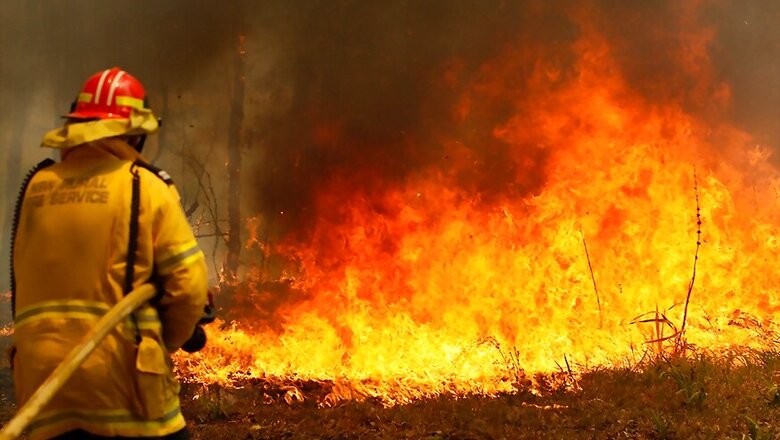Rain Brings Relief to Australia after Catastrophic Bushfires But Poses New Challenge of Flash Floods

views
Melbourne: Thunderstorms and rain across parts of bushfire-devastated eastern Australia brought some relief to the harried people and firefighters but posed a new challenge of flash floods.
The raging Australian bushfires, one of the worst in its history, burned over 10 million hectares of land, destroyed over 2,000 homes and pushed many species towards extinction, apart from claiming the lives of 28 people.
The air quality in Melbourne deteriorated to the "worst in the world" on Tuesday due to the smoke from the massive bushfires.
While 16 fires are still burning across Australia's Victoria state, thunderstorms on Wednesday night brought some relief from the dense smoke haze.
In the state of New South Wales, where many of the worst fires have burnt, there were "good falls" on some blazes early Thursday, the local meteorology bureau reported.
"Relief is here for a number of firefighters working across NSW," the state's Rural Fire Service said.
Change in cooler weather conditions that hit the state came with new warnings for flash flooding and dumping hailstones.
The rain is offering some relief for fire crews battling blazes, but there are concerns the wet weather could cause landslides, flash flooding and contaminate water, the Australian Broadcasting Corporation (ABC) reported.
Cool, wet conditions are good news for firefighters, who have been battling hundreds of blazes across the state since September, it said.
A huge volume of rain from Wednesday has caused a sinkhole in Melbourne's north-west.
A Bureau of Meteorology (BOM) spokeswoman said 44 mm of rain hit Avalon suburb in just 30 minutes last night in a "one-in-100 year event".
The fire grounds were vulnerable to erosion, Bureau of Meteorology forecaster Kevin Parkin was quoted as saying by The Age.
"The concern with thunderstorms is that they concentrate the rain to a very short period of time," he said.
Parkin said the rain and storm activity would move to the state's north-east on Thursday but there was a chance the trough could morph into a low-pressure system later in the week, bringing more rainfall.
Meanwhile, train lines were suspended on Wednesday and the storms forced flight diversion for Melbourne to Adelaide and Sydney and others were forced to turn back and land in Canberra.
"A total of 130 flights were cancelled on Wednesday and overnight and extra flights were scheduled for Thursday to help stranded travellers," a spokesperson for the Melbourne Airport said.
Ambulance Victoria on Wednesday said that it received more than 100 calls during the morning from people with breathing problems.
Most of the suburban areas of Melbourne received rain of up to 15-30 mm but some fire-affected parts of Victoria including Orbost and Mallacoota received less than 5 mm.
Authorities warned that such condition of heavy rain could cause land erosion and mudslides in firegrounds, harming firefighting efforts.
"Any thunderstorm with heavy rain in fire-affected areas has the potential to cause significant runoffs which picks up and ash and soil," Bureau of Meteorology's senior forecaster Rod Dickson said.
"Because there's no vegetation to soak up rainfall it can cause problems for landslides and producing debris across roads, or washing ash and debris into waterways," he added.
Dickson said the rainfall was unlikely to have any significant impact on containing fires.
About 150 millimetres of rain is needed to extinguish the blazes, according to authorities.




















Comments
0 comment